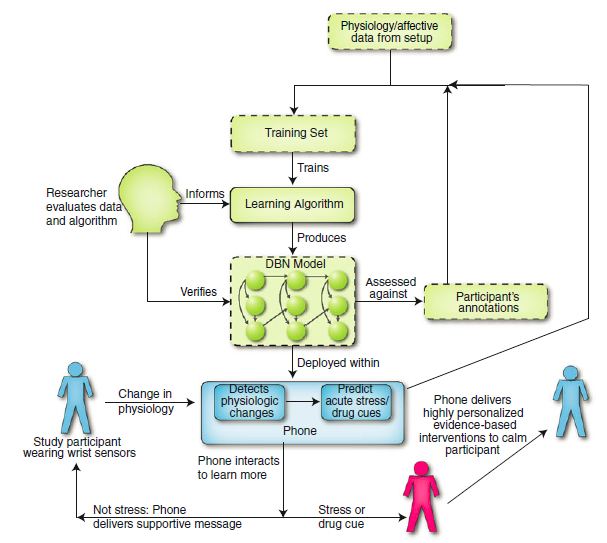A mobile device for preventing and treating drug use
February 9, 2012
University of Massachusetts Medical School researchers are developing a smartphone-based system called “iHeal” that detects drug cravings and attempts to prevent drug use.
A drug user wears a sensor band around their wrist that measures skin conductance, skin temperature, motion, and pulse — all indicators of arousal or stress. The band wirelessly transmits information to a smartphone, where apps monitor and process the user’s physiological data using self-improving machine learning software to identify when changes in physiology (e.g., increased pulse/skin conductance and motion) potentially arose from changes in sympathetic tone (as from drug craving and PTSD) rather than from exertion.
When the software detects increased stress or arousal, it asks the user to annotate events by inputting information about their perceived level of stress, drug cravings, and current activities. iHeal’s ultimate goal is to identify, in real time, drug cravings and deliver personalized, multimedia drug prevention interventions precisely at the moment of greatest need.
The researchers selected the Android OS because of ease of programming and because it supports the use of multiple Bluetooth connections from the sensor band to the phone. The phone also communicated via encrypted data to a secure web server and Microsoft SQL database in a high-security location.
Ref.: Boyer EW, et al., Preliminary efforts directed toward the detection of craving of illicit substances: the iHeal Project, Journal of Medical Toxicology, March 2012; (in press)
